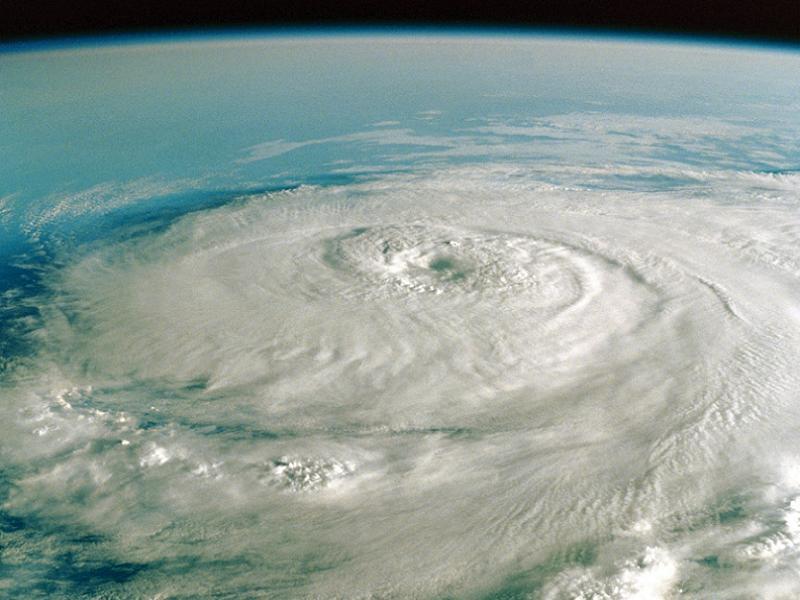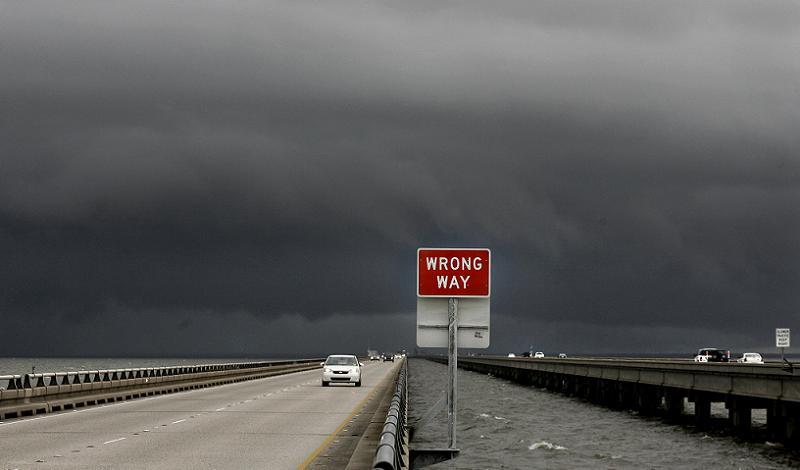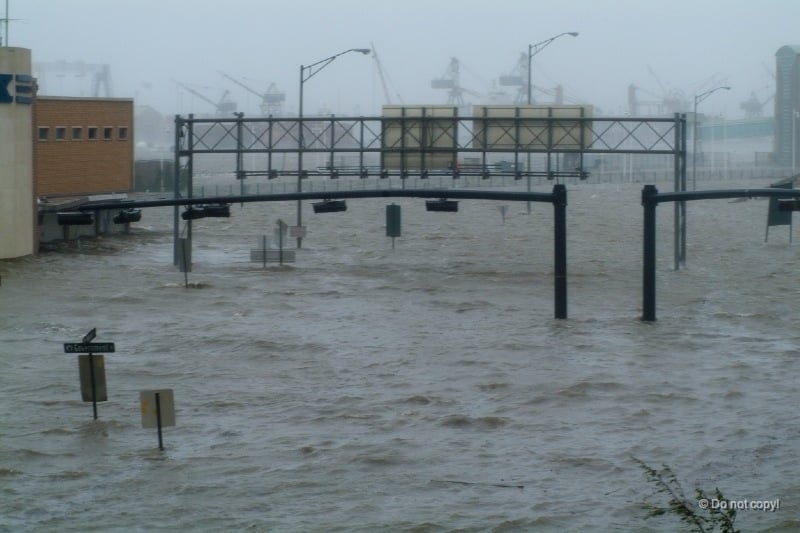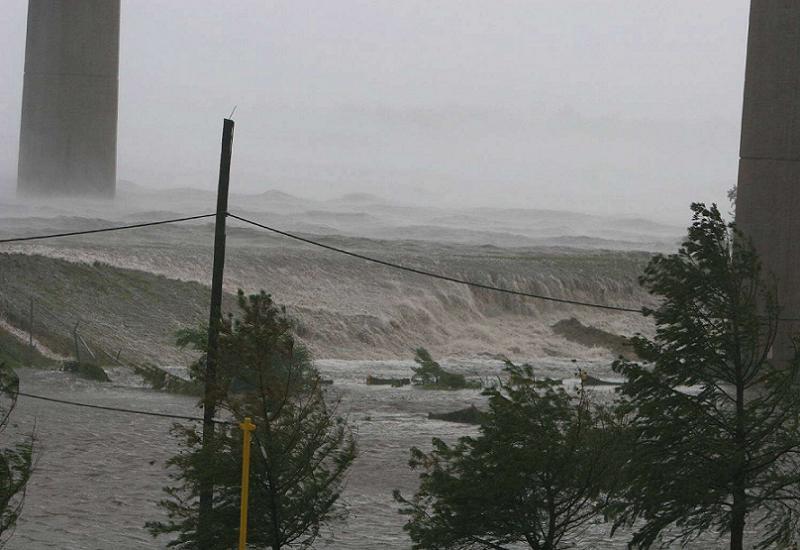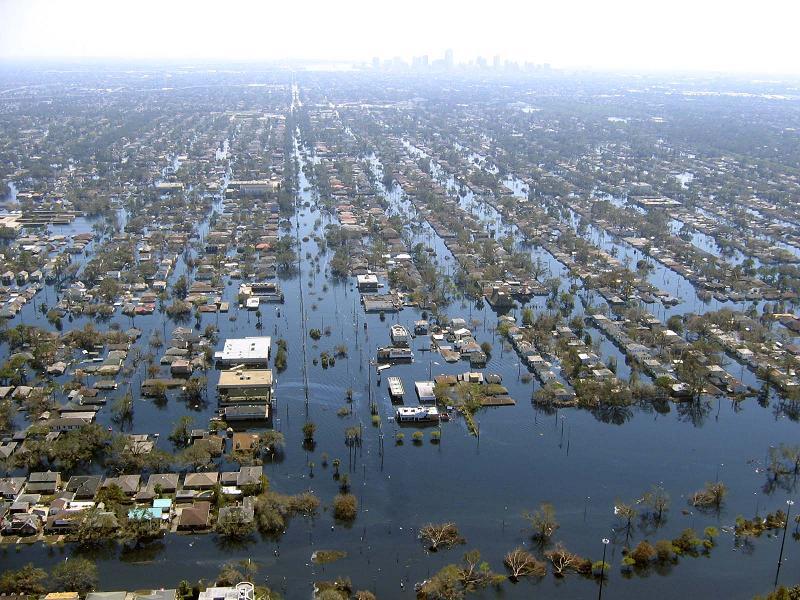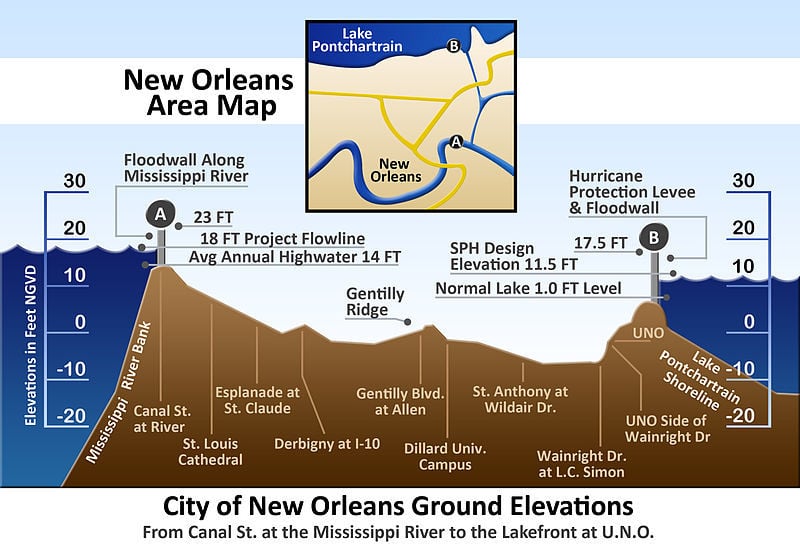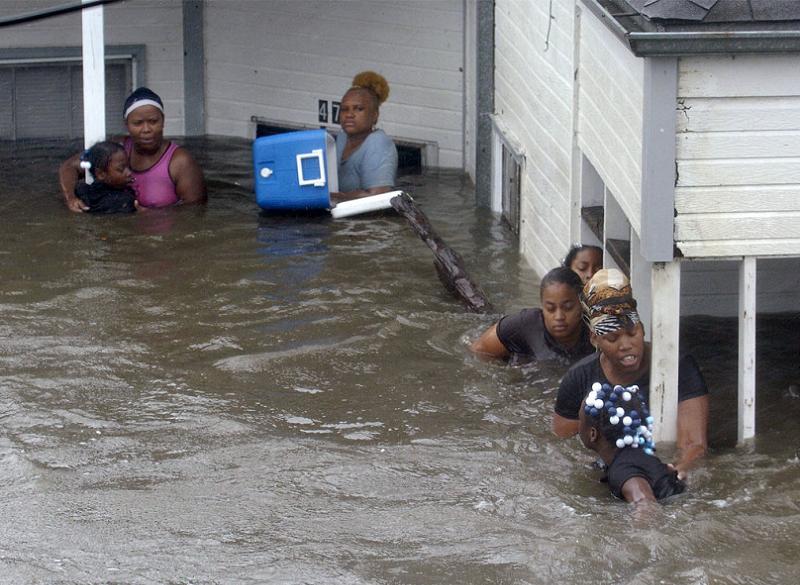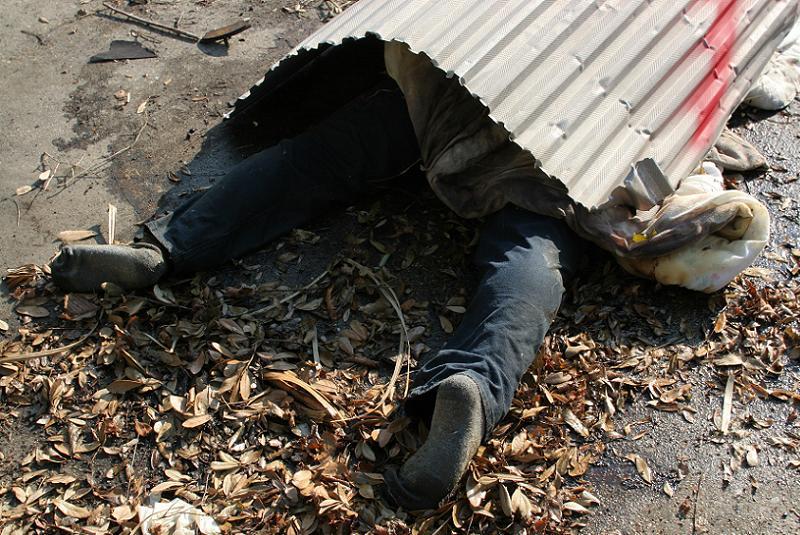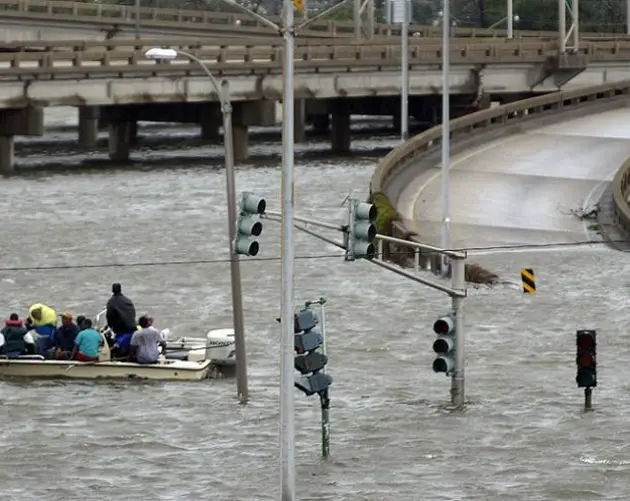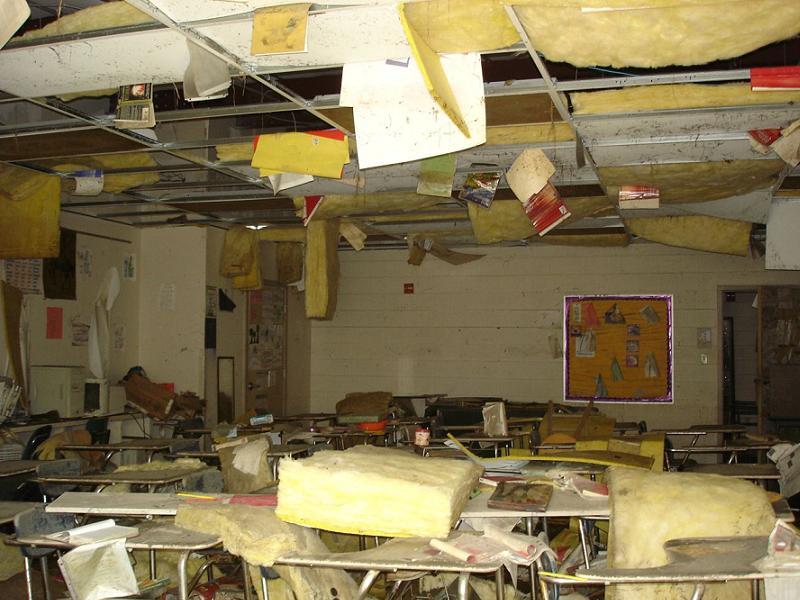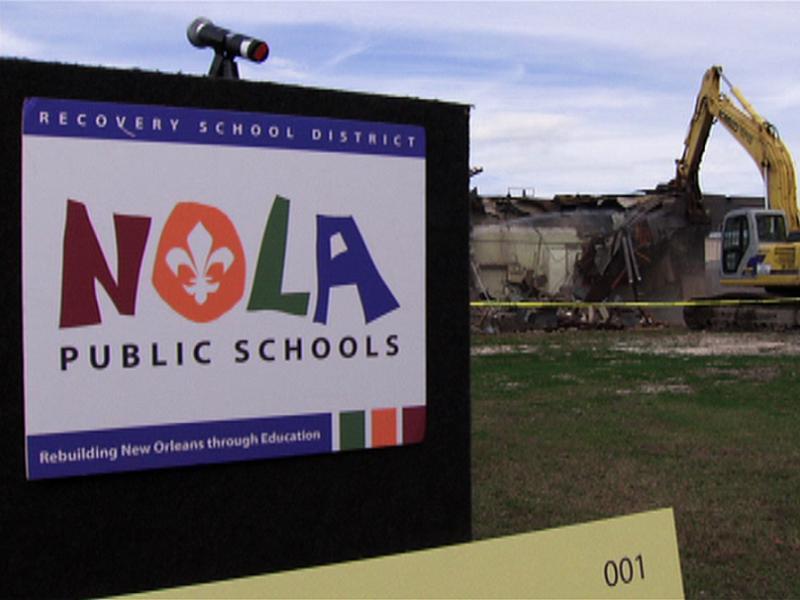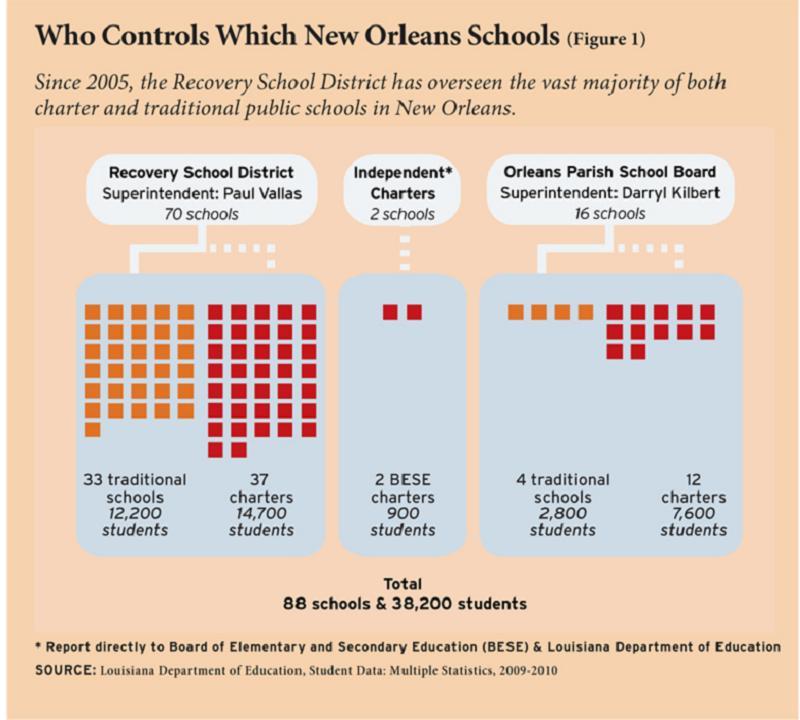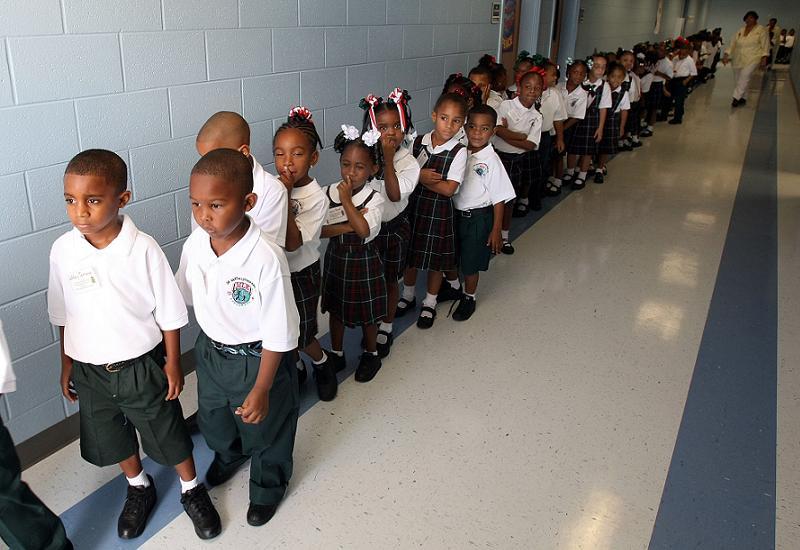A decade has passed since Hurricane Katrina struck the Gulf Coast. What has -- and hasn't -- changed in the Big Easy since?
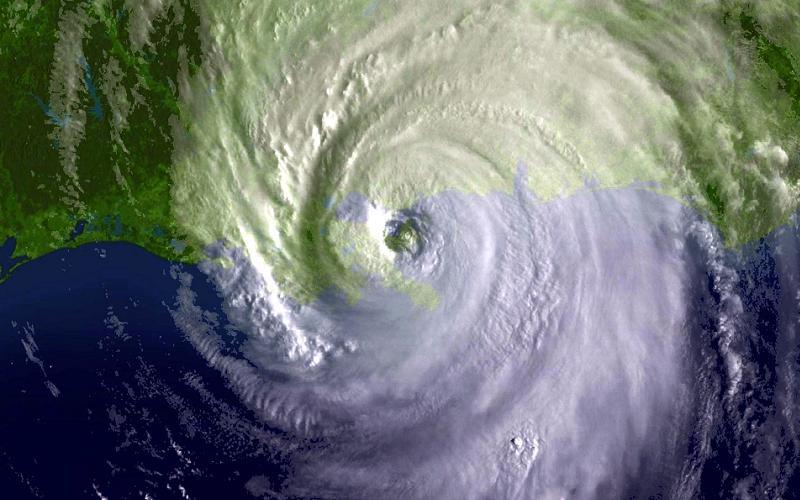
Hurricane Katrina as seen from space. Source: SMS Ranjish
Ten years ago this week, Hurricane Katrina swept over the Gulf Coast and shredded communities from Louisiana to Florida. Emergency response to the crisis was badly bungled, and the post-storm recovery has had some unexpected effects on the area.
As one of the costliest disasters in American history, Hurricane Katrina revealed quite a lot about our priorities, and how American society does—and doesn’t—work. The decade after the storm, as New Orleans and its surroundings have worked to rebuild, reveals even more.
The Storm
Katrina made landfall in southeastern Louisiana on August 29th, as either a Category 2, 3, or 4 storm, depending on who you ask. Power failed in New Orleans almost immediately, so on-the-ground measurements of rainfall and wind velocity were mostly guesswork. Considering that a Category 2 storm sustains winds of between 96 and 110 mph, even the low estimates were terrifying.
For perspective, imagine yourself blasting down the freeway at double the posted speed limit. Now, without slowing, toss a wheelbarrow full of roofing tiles out the window at pedestrians and spray them down with a fire hose as you drive past. That's what was headed for New Orleans in 2005, except it was 150 miles across.
The storm dropped 15 inches of rain on parts of the state, an amount equal to the average annual rainfall in Montana. Much of the rain fell on already-waterlogged wetlands in the Mississippi delta and over a series of lakes, notably Lake Pontchartrain. The U.S. Army Corps of Engineers, which had been responsible for strengthening the levees around the lake, stopped work on the project in 2003, as 80 percent of its budget was cut to defray the cost of the Iraq invasion.
Unsurprisingly, the levees tore loose under the pressure of the extra water. This, combined with a 13- to 16-foot storm surge, flooded the city of New Orleans. The city's unique bowl-shaped topography didn't help, as the floodwaters had nowhere to drain once they overtopped the levees. As a result, around 80 percent of the city sat under several feet of stagnant water for days.
The Aftermath
Immediately after Katrina hit, New Orleans resembled a wet tropical Stalingrad. Most neighborhoods were reduced to waterlogged rubble, with whole blocks swept away where the water had picked up some momentum. Oil barrels and countless gallons of God-knows-what had tipped into the water, coating every surface in sticky toxic residue. Bodies were floating in standing pools, buried under smashed buildings, and lying in the street to be eaten by the tens of thousands of rats driven up out of the sewer.
About 1,500 New Orleans residents were dead, and recovery of the bodies was so slow that many of the people who died in the heavily damaged east side of the city decomposed to the point they could only be identified by dental records.
Journalists covering the storm, temporarily stirred to action, put a great deal of pressure on the federal government. Officials faced embarrassing questions about nearly every aspect of the emergency management – from the budget cuts that left the city vulnerable, to the competence of various political appointees managing the recovery and the obscenity of restoring power to the Jackson Square neighborhood long enough for the president to give a speech, then cutting it off again when he left.
The Recovery From Hurricane Katrina

Red Cross workers provide aid.
Long-term recovery in Katrina-affected areas predictably became a heavily politicized struggle between well-connected special interests. With a $51 billion aid package up for grabs, various contractors, advisers, and general con men swung into action to sweep up as much money as possible before it landed on the people most affected by the storm.
The aid that finally filtered down to residents of the area was held up by the very rules and red tape meant to provide relief. Within a few months, it was discovered that at least 24,000 Louisiana homeowners had accepted grants to raise their homes up to six feet off the ground and thus bring their homes into compliance with the new flood-control rules, but were later unable to prove that they'd made the upgrades.
If you lived in New Orleans, and your house was demolished by Hurricane Katrina, rebuilding probably started with a phone call to your insurance carrier. Of course, since most homeowners' policies don't cover flood insurance, and the floodwaters usually carried away the rubble knocked over by the wind, you were in for the fight of your life just to collect on the insurance you were owed for the wind damage. Federal aid was available, but only in the amount equal to the difference between your insurance settlement and the assessed value of your home.
If you didn't have insurance, you weren't eligible for this aid. Even the people who did qualify were put through bizarre bureaucratic torture before they could collect disaster relief; one requirement for getting a standard federal grant to rebuild collapsed homes was that applicants must first apply and be rejected for a Small Business Administration-backed loan.
If you had the misfortune to be a retired person with good credit, then the loan would probably be approved and then no aid for you. If you were poor and disorganized to the point that filing a loan application from whatever shelter you were living in was a challenge, then no aid for you either.
All this sounds bad, but it could easily have been worse. Dennis Hastert, then Speaker of the House, publicly questioned if any federal funds should be used to help New Orleans rebuild at all.
The Big Easy
Meanwhile, ideology infiltrated and influenced the rebuilding process. As Naomi Klein would later argue in The Shock Doctrine, natural disasters suspend the ordinary rules of debate and consent, allowing otherwise unpopular ideas to sail through without opposition before anybody knows what's going on. The areas affected by Hurricane Katrina were ground zero for this kind of blank-slate reorganization, mostly in the name replacing older, state-run infrastructure with privatized options.
Other ideas that floated in the wake of the disaster included but were not limited to: repealing the estate tax, allowing local businesses to depreciate their assets on a hurry-up schedule, instituting a flat tax and declaring the Gulf Coast an "enterprise zone" like Hong Kong, and allowing drilling in the Arctic National Wildlife Refuge.
The wish list runs long, and not every idea became a reality, but enough of the ideas floating around think tanks and congressional committees did see the light of day to have an effect on the rebuilding. Ten years later, the results are on display.
Professor Douglas Harris, describing the stellar gains of the new charter school system in an article entitled "Good News for New Orleans," wrote: "We are not aware of any other districts that have made such large improvements in such a short time." What Professor Harris, who is described in a footnote to the article as a "professor of economics at Tulane University and founder and director of the Education Research Alliance for New Orleans," apparently forgot to mention was that, in the wake of Katrina, Tulane University took over a financial stake in Lusher Charter School, a New Orleans K-12 and retooled it into a private school for the children of Tulane staff members.
As an exclusive private academy, and especially as one that caters to academics' children, Lusher is at least likely to teach science in its science classes. Quite a few of the new charters, liberated from the tyranny of Supreme Court decisions and First Amendment law, spend their taxpayer-funded budgets on something called "Accelerated Christian Education (A.C.E.)." According to the company's own literature, A.C.E. students are taught: "to see life from God’s point of view, to take responsibility for their own learning, and to walk in Godly wisdom and character."
Children in these charter schools are exposed to intensive religious instruction in every subject. English students are likely to be given examples of interrogative statements such as: "Do you know Jesus as your personal Saviour? Can you ever praise Him enough?" In science, the curriculum comes unglued. A.C.E. students are taught that the Loch Ness Monster is probably real, and that this disproves evolution, which is described in the curriculum materials as "impossible."
A.C.E. is currently taught at 10 schools in New Orleans, though none of the charter schools that took over the public system are strictly required to disclose the details of their curriculum, so it could be more.
Hurricane Katrina hit New Orleans with all the force and finality of a war. When it lifted, people whose loved ones were dead and lost under the rubble came out of their shelters into a world where nobody seemed to know what to do or how to help them. Ten years later, many of the survivors are still there, with their children caught up in a surreal world where the Loch Ness Monster has been seen on sonar, and a few bouts with detention can see them packed off to forgotten ghetto schools to rot with the other poor children.
Much has been written, and will continue to be written, no doubt, about the wonders of modern, much-improved New Orleans, but it's worth sparing a thought this anniversary to the sad fact that sometimes, the real disaster happens after the rain stops.
